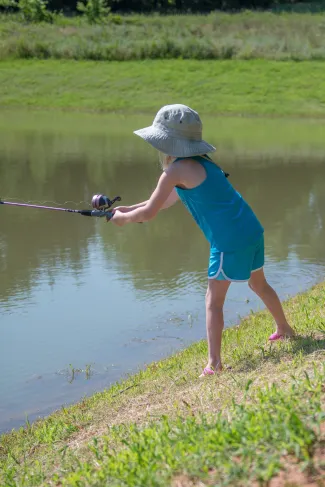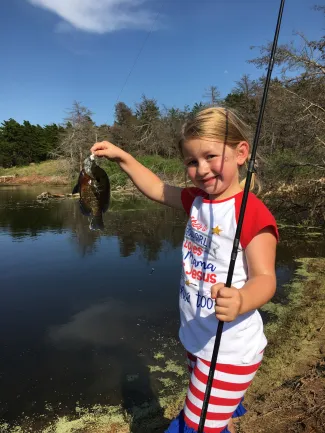There are thousands of farm ponds in Oklahoma which provide owners the opportunity to fish and enjoy other recreational activities. Farm pond owners are often curious to what fish are in their ponds and how to properly manage these prized watersheds.
Each year, the Oklahoma Department of Wildlife Conservation gets numerous calls to local fisheries staff about surveying ponds or management advice on how to improve the fishery, but having over 250,000 private watersheds makes this not feasible for regional staff to survey every pond. So, here are some methods for farm pond owners to assess their own pond at their pace and enjoy fishing.

First Things First
When wanting to manage a pond, first set a goal with the objectives you want in mind; for example, a trophy bass fishery, a harvestable catfishing pond, or kid’s sunfish pond. In order to achieve the desired goal the two main principles are getting to know your fish and fishery (population), and managing people who use the fishery. Since you own the pond, you should be the authority on how to manage your pond.
Fishing for Data
Gathering data for a population is the fun part and doesn’t require much expensive equipment to do so; a rod and reel with assorted lures/baits allows folks to enjoy fishing and collect the different size structures and species of fish in your pond. I would also add that this is a great way to introduce someone new to fishing and enjoying the outdoors.

Make sure to have a fishing log of what species you catch (largemouth bass, sunfish, catfish), size (length and weight), if fish were kept or released, and if one desires, mark fish to keep track of recaptures. This can be done simply with a paper hole punch in a fin or a T-Bar style fish tag.
When fishing, don’t focus on one species of fish at a time; allow yourself to catch multiple species, which can be an indicator of your forage or baitfish that are available within your pond. If you want to know baitfish or how spawning success was, a simple minnow seine can be a helpful tool to get a quick understanding of what is present. Other methods for collection can include cast nets or fish traps, and these methods can aid in the data set you are compiling.
When sampling fish with a rod and reel, make sure to sample year-round. When using methods such as seining and traps, focus on summer months while smaller fish can’t outswim a net. This combination will allow you to build a good understanding of what is in your pond and if management goals are being obtained.
We're Here To Assist
After you have set your goals and collected data, call your local regional fisheries office with this information and we will be glad to help you manage your pond with advice. When having an end goal for a pond, it allows for defined methods to assess the populations which you are trying to achieve and consistent data sets will support your management objectives. When setting out on your management plan, you must take the time to learn your pond, keep things simple (it doesn’t cost tons of money to manage ponds), and more than anything, have fun with the process.